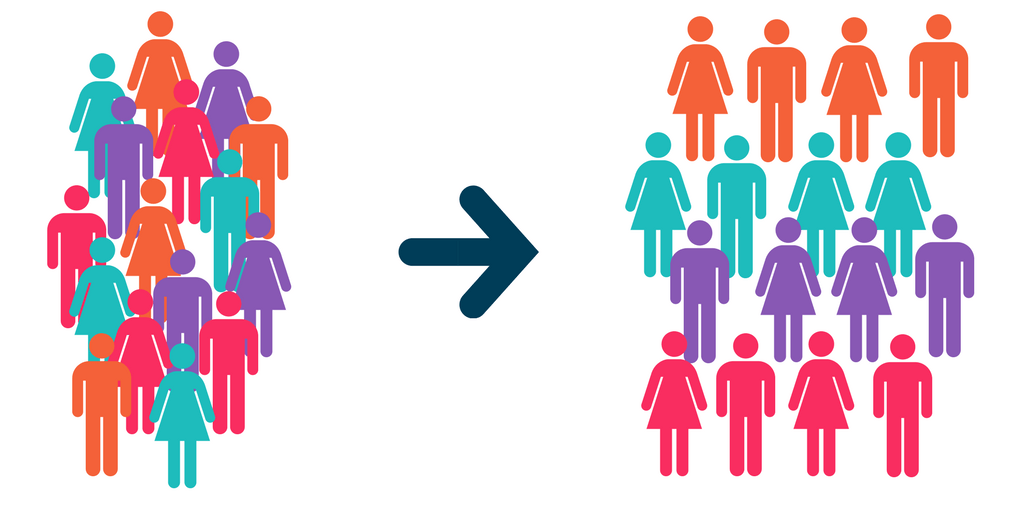In today’s digital age, effective marketing is all about understanding your audience. Gone are the days of one-size-fits-all advertising; now, it’s all about personalized, targeted campaigns. To achieve this, businesses employ audience analysis and segmentation. In this comprehensive guide, we will explore the nuances of audience analysis and segmentation, revealing how they can elevate your marketing strategies to new heights.
Audience Analysis and Segmentation: Crafting Your Targeted Marketing Strategy

What is Audience Analysis?
1. Defining the Basics
Audience analysis is the process of understanding your target audience on a deeper level. It goes beyond basic demographics and delves into the psychology, behavior, and preferences of your potential customers. By doing so, you gain valuable insights into what motivates them, what problems they face, and how your product or service can provide a solution.
1. The Importance of Understanding Your Audience
Knowing your audience intimately is crucial for several reasons. Firstly, it allows you to create content and marketing strategies that resonate with your audience, increasing the chances of engagement and conversions. Secondly, it helps you tailor your messaging to address the specific pain points of your audience, making your product or service more appealing.
The Process of Audience Analysis
1. Data Collection
The first step in audience analysis is collecting data. This can include demographic information such as age, gender, location, and income. It also involves gathering data on consumer behavior, preferences, and past interactions with your brand.
2. Demographic Analysis
Demographic analysis involves segmenting your audience based on observable characteristics. This can include age groups, gender, marital status, education level, and more. It provides a basic understanding of who your audience is.
3. Psychographic Analysis
Psychographic analysis delves deeper into the psyche of your audience. It examines their values, beliefs, interests, and lifestyle. This information is valuable for creating content that resonates emotionally with your audience.
4. Behavioral Analysis
Behavioral analysis focuses on how your audience interacts with your brand. It considers factors like purchase history, online behavior, and engagement with your marketing efforts. Understanding behavior helps in tailoring your marketing strategies.
Benefits of Audience Analysis
1. Enhanced Personalization
One of the primary benefits of audience analysis is enhanced personalization. When you understand your audience’s preferences and pain points, you can create content and offers that feel tailor-made for them.
2. Improved Engagement
Audience analysis also leads to improved engagement. When your content speaks directly to the needs of your audience, they are more likely to interact with it, whether it’s through likes, shares, or comments.
3. Higher Conversion Rates
Ultimately, audience analysis leads to higher conversion rates. When you target the right audience with the right message, you increase the chances of turning leads into paying customers.
What is Audience Segmentation?
1. Breaking Down Your Audience
Audience segmentation takes the insights gained from audience analysis and divides your audience into distinct segments or groups. Each segment shares similar characteristics and needs, allowing for more targeted marketing efforts.
2. Types of Segmentation
Demographic
Demographic segmentation divides your audience based on characteristics such as age, gender, income, and education. It’s a common starting point for segmentation.
Geographic
Geographic segmentation focuses on where your audience is located. It’s essential for businesses with location-specific products or services.
Psychographic
Psychographic segmentation considers lifestyle, values, and interests. It helps create emotionally resonant marketing campaigns.
Behavioral
Behavioral segmentation categorizes your audience based on their actions and interactions with your brand. It’s highly effective for tailoring content.
Creating Effective Audience Segments
1. Identifying Key Characteristics
To create effective audience segments, you must identify the key characteristics that differentiate one group from another. This could be age, buying habits, or online behavior.
2. Developing Personas
Personas are fictional representations of your audience segments. They help humanize your target audience and guide your marketing efforts.
3. Targeting the Right Audience
Once you’ve created your segments and personas, it’s crucial to target the right audience with the right messaging. This ensures that your marketing efforts are laser-focused.
Implementing Audience Segmentation in Marketing
1. Tailoring Content
With audience segments in place, you can tailor your content to each group’s unique needs and preferences. This significantly enhances the effectiveness of your marketing campaigns.
2. Email Marketing
Email marketing becomes more powerful when you send personalized messages to specific segments of your audience. It leads to higher open rates and click-through rates.
3. Social Media Advertising
Social media platforms offer robust targeting options. By utilizing audience segments, you can deliver ads to the most receptive audience.
4. PPC Campaigns
Pay-per-click (PPC) advertising benefits from audience segmentation. You can allocate your budget more efficiently by targeting high-converting segments.
Measuring the Effectiveness of Segmentation
1. Analyzing Key Metrics
To assess the success of your segmentation efforts, you must analyze key metrics. This includes conversion rates, engagement levels, and return on investment (ROI).
2. Adjusting Strategies
Based on your analysis, you should be prepared to adjust your strategies. Segmentation is an ongoing process, and refining your approach is essential for continued success.
Challenges
1. Data Privacy Concerns
In an era of increasing data privacy regulations, collecting and using customer data presents challenges. Businesses must navigate these concerns carefully.
2. Staying Current
Audience preferences and behaviors can change rapidly. Staying current with the latest trends and data is critical for effective segmentation.
Future Trends
1. AI and Machine Learning
The future of audience analysis and segmentation is likely to involve AI and machine learning. These technologies can process vast amounts of data to uncover hidden insights.
2. Predictive Analytics
Predictive analytics will play a more significant role in marketing. Businesses can anticipate customer behavior and tailor their strategies accordingly.
Conclusion
In conclusion, audience analysis and segmentation are indispensable tools in modern marketing. By understanding your audience on a profound level and segmenting them effectively, you can create targeted campaigns that yield higher engagement and conversion rates. Embrace the power of audience analysis and segmentation, and watch your marketing efforts soar.
But don’t just take our word for it—experience the benefits firsthand! If you’re ready to supercharge your marketing strategies and witness the impact of audience analysis and segmentation, we invite you to request a demo from AIM Technologies today.
FAQs
1. What is the difference between audience analysis and audience segmentation?
- Audience analysis is the process of understanding your target audience, while audience segmentation is the act of dividing your audience into distinct groups based on shared characteristics.
2. How can I collect data for audience analysis?
- Data for audience analysis can be collected through surveys, social media insights, website analytics, and customer feedback.
3. What are some common demographic factors used in segmentation?
- Common demographic factors include age, gender, income, education, and marital status.
4. Why is personalized marketing important?
- Personalized marketing is important because it resonates with consumers on a personal level, increasing engagement and conversion rates.
5. How can businesses address data privacy concerns in audience analysis?
- Businesses can address data privacy concerns by being transparent about data collection, obtaining consent, and complying with relevant regulations.




